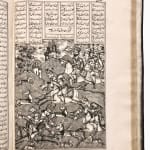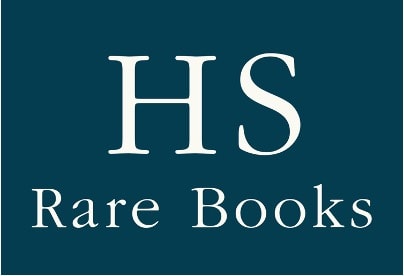![Firdawsi, Abu’l-Qasim, Kitab-i Shahnameh, Rabi’ al-Thani, 1276 Hijri [1859 CE]. Bombay. Dadu Miyan ibn Muhammad Abdullah.](https://artlogic-res.cloudinary.com/w_1600,h_1600,c_limit,f_auto,fl_lossy,q_auto/artlogicstorage/hsrarebooks/images/view/a0e40c6c010c72fceb568f2c6facb26dj/hsrarebooks-firdawsi-abu-l-qasim-kitab-i-shahnameh-rabi-al-thani-1276-hijri-1859-ce-.-bombay.-dadu-miyan-ibn-muhammad-abdullah..jpg)
![Firdawsi, Abu’l-Qasim, Kitab-i Shahnameh, Rabi’ al-Thani, 1276 Hijri [1859 CE]. Bombay. Dadu Miyan ibn Muhammad Abdullah.](https://artlogic-res.cloudinary.com/w_1600,h_1600,c_limit,f_auto,fl_lossy,q_auto/artlogicstorage/hsrarebooks/images/view/f9974ccf4593326d89a17a9b8a47e3caj/hsrarebooks-firdawsi-abu-l-qasim-kitab-i-shahnameh-rabi-al-thani-1276-hijri-1859-ce-.-bombay.-dadu-miyan-ibn-muhammad-abdullah..jpg)
![Firdawsi, Abu’l-Qasim, Kitab-i Shahnameh, Rabi’ al-Thani, 1276 Hijri [1859 CE]. Bombay. Dadu Miyan ibn Muhammad Abdullah.](https://artlogic-res.cloudinary.com/w_1600,h_1600,c_limit,f_auto,fl_lossy,q_auto/artlogicstorage/hsrarebooks/images/view/411fcd1e9f49cfae6f7b47dc042f259bj/hsrarebooks-firdawsi-abu-l-qasim-kitab-i-shahnameh-rabi-al-thani-1276-hijri-1859-ce-.-bombay.-dadu-miyan-ibn-muhammad-abdullah..jpg)
![Firdawsi, Abu’l-Qasim, Kitab-i Shahnameh, Rabi’ al-Thani, 1276 Hijri [1859 CE]. Bombay. Dadu Miyan ibn Muhammad Abdullah.](https://artlogic-res.cloudinary.com/w_1600,h_1600,c_limit,f_auto,fl_lossy,q_auto/artlogicstorage/hsrarebooks/images/view/91ec535f6b88a38747b41b3793bdd990j/hsrarebooks-firdawsi-abu-l-qasim-kitab-i-shahnameh-rabi-al-thani-1276-hijri-1859-ce-.-bombay.-dadu-miyan-ibn-muhammad-abdullah..jpg)
![Firdawsi, Abu’l-Qasim, Kitab-i Shahnameh, Rabi’ al-Thani, 1276 Hijri [1859 CE]. Bombay. Dadu Miyan ibn Muhammad Abdullah.](https://artlogic-res.cloudinary.com/w_1600,h_1600,c_limit,f_auto,fl_lossy,q_auto/artlogicstorage/hsrarebooks/images/view/558efeeac6f358e7a441fbc03bcbad7cj/hsrarebooks-firdawsi-abu-l-qasim-kitab-i-shahnameh-rabi-al-thani-1276-hijri-1859-ce-.-bombay.-dadu-miyan-ibn-muhammad-abdullah..jpg)
![Firdawsi, Abu’l-Qasim, Kitab-i Shahnameh, Rabi’ al-Thani, 1276 Hijri [1859 CE]. Bombay. Dadu Miyan ibn Muhammad Abdullah.](https://artlogic-res.cloudinary.com/w_1600,h_1600,c_limit,f_auto,fl_lossy,q_auto/artlogicstorage/hsrarebooks/images/view/8f707c6efa5da5d05c95565ad3af4b8bj/hsrarebooks-firdawsi-abu-l-qasim-kitab-i-shahnameh-rabi-al-thani-1276-hijri-1859-ce-.-bombay.-dadu-miyan-ibn-muhammad-abdullah..jpg)
![Firdawsi, Abu’l-Qasim, Kitab-i Shahnameh, Rabi’ al-Thani, 1276 Hijri [1859 CE]. Bombay. Dadu Miyan ibn Muhammad Abdullah.](https://artlogic-res.cloudinary.com/w_1600,h_1600,c_limit,f_auto,fl_lossy,q_auto/artlogicstorage/hsrarebooks/images/view/d2e5b148cc73e7acb5a3608e384ecf5ej/hsrarebooks-firdawsi-abu-l-qasim-kitab-i-shahnameh-rabi-al-thani-1276-hijri-1859-ce-.-bombay.-dadu-miyan-ibn-muhammad-abdullah..jpg)
![Firdawsi, Abu’l-Qasim, Kitab-i Shahnameh, Rabi’ al-Thani, 1276 Hijri [1859 CE]. Bombay. Dadu Miyan ibn Muhammad Abdullah.](https://artlogic-res.cloudinary.com/w_1600,h_1600,c_limit,f_auto,fl_lossy,q_auto/artlogicstorage/hsrarebooks/images/view/0dfdb87905fb5beea5d117b867371ce4j/hsrarebooks-firdawsi-abu-l-qasim-kitab-i-shahnameh-rabi-al-thani-1276-hijri-1859-ce-.-bombay.-dadu-miyan-ibn-muhammad-abdullah..jpg)
![Firdawsi, Abu’l-Qasim, Kitab-i Shahnameh, Rabi’ al-Thani, 1276 Hijri [1859 CE]. Bombay. Dadu Miyan ibn Muhammad Abdullah.](https://artlogic-res.cloudinary.com/w_1600,h_1600,c_limit,f_auto,fl_lossy,q_auto/artlogicstorage/hsrarebooks/images/view/93adbb42af320e8ab0b4db8d2d640528j/hsrarebooks-firdawsi-abu-l-qasim-kitab-i-shahnameh-rabi-al-thani-1276-hijri-1859-ce-.-bombay.-dadu-miyan-ibn-muhammad-abdullah..jpg)
![Firdawsi, Abu’l-Qasim, Kitab-i Shahnameh, Rabi’ al-Thani, 1276 Hijri [1859 CE]. Bombay. Dadu Miyan ibn Muhammad Abdullah.](https://artlogic-res.cloudinary.com/w_1600,h_1600,c_limit,f_auto,fl_lossy,q_auto/artlogicstorage/hsrarebooks/images/view/b5d5fd182af1b704cda8dee8f3cd10d8j/hsrarebooks-firdawsi-abu-l-qasim-kitab-i-shahnameh-rabi-al-thani-1276-hijri-1859-ce-.-bombay.-dadu-miyan-ibn-muhammad-abdullah..jpg)
![Firdawsi, Abu’l-Qasim, Kitab-i Shahnameh, Rabi’ al-Thani, 1276 Hijri [1859 CE]. Bombay. Dadu Miyan ibn Muhammad Abdullah.](https://artlogic-res.cloudinary.com/w_1600,h_1600,c_limit,f_auto,fl_lossy,q_auto/artlogicstorage/hsrarebooks/images/view/5250e8a0fabb58f2d101d22204b9bb48j/hsrarebooks-firdawsi-abu-l-qasim-kitab-i-shahnameh-rabi-al-thani-1276-hijri-1859-ce-.-bombay.-dadu-miyan-ibn-muhammad-abdullah..jpg)
![Firdawsi, Abu’l-Qasim, Kitab-i Shahnameh, Rabi’ al-Thani, 1276 Hijri [1859 CE]. Bombay. Dadu Miyan ibn Muhammad Abdullah.](https://artlogic-res.cloudinary.com/w_1600,h_1600,c_limit,f_auto,fl_lossy,q_auto/artlogicstorage/hsrarebooks/images/view/8954e94437ee57c2d0aff33b56beb5d4j/hsrarebooks-firdawsi-abu-l-qasim-kitab-i-shahnameh-rabi-al-thani-1276-hijri-1859-ce-.-bombay.-dadu-miyan-ibn-muhammad-abdullah..jpg)
![Firdawsi, Abu’l-Qasim, Kitab-i Shahnameh, Rabi’ al-Thani, 1276 Hijri [1859 CE]. Bombay. Dadu Miyan ibn Muhammad Abdullah.](https://artlogic-res.cloudinary.com/w_1600,h_1600,c_limit,f_auto,fl_lossy,q_auto/artlogicstorage/hsrarebooks/images/view/6ba81277fd05393b68258aacc5f1bedaj/hsrarebooks-firdawsi-abu-l-qasim-kitab-i-shahnameh-rabi-al-thani-1276-hijri-1859-ce-.-bombay.-dadu-miyan-ibn-muhammad-abdullah..jpg)
![Firdawsi, Abu’l-Qasim, Kitab-i Shahnameh, Rabi’ al-Thani, 1276 Hijri [1859 CE]. Bombay. Dadu Miyan ibn Muhammad Abdullah.](https://artlogic-res.cloudinary.com/w_1600,h_1600,c_limit,f_auto,fl_lossy,q_auto/artlogicstorage/hsrarebooks/images/view/93eac2311abcf64d115b85d2b8fbdfe4j/hsrarebooks-firdawsi-abu-l-qasim-kitab-i-shahnameh-rabi-al-thani-1276-hijri-1859-ce-.-bombay.-dadu-miyan-ibn-muhammad-abdullah..jpg)
![Firdawsi, Abu’l-Qasim, Kitab-i Shahnameh, Rabi’ al-Thani, 1276 Hijri [1859 CE]. Bombay. Dadu Miyan ibn Muhammad Abdullah.](https://artlogic-res.cloudinary.com/w_1600,h_1600,c_limit,f_auto,fl_lossy,q_auto/artlogicstorage/hsrarebooks/images/view/2f224a70a0b1eaf1b4b301325a7f7208j/hsrarebooks-firdawsi-abu-l-qasim-kitab-i-shahnameh-rabi-al-thani-1276-hijri-1859-ce-.-bombay.-dadu-miyan-ibn-muhammad-abdullah..jpg)
![Firdawsi, Abu’l-Qasim, Kitab-i Shahnameh, Rabi’ al-Thani, 1276 Hijri [1859 CE]. Bombay. Dadu Miyan ibn Muhammad Abdullah.](https://artlogic-res.cloudinary.com/w_1600,h_1600,c_limit,f_auto,fl_lossy,q_auto/artlogicstorage/hsrarebooks/images/view/efb1352ef6f79be65408ce314ab3e2daj/hsrarebooks-firdawsi-abu-l-qasim-kitab-i-shahnameh-rabi-al-thani-1276-hijri-1859-ce-.-bombay.-dadu-miyan-ibn-muhammad-abdullah..jpg)
Firdawsi, Abu’l-Qasim
An early lithographic Shahnameh, the great Persian epic, with calligraphy by Muhammad Ibrahim ibn Muhammad Hussein Khan Ouliya’ Sami’ Shirazi and numerous lithographic illustrations drawn in the style of contemporary Qajar miniatures by an unnamed artist, melding the conventions of manuscript and printed book, published by Dadu Miyan ibn Muhammad, boastfully described in the final colophon as the ‘master of printers’.
Further images
-
(View a larger image of thumbnail 1
)

-
(View a larger image of thumbnail 2
)

-
(View a larger image of thumbnail 3
)

-
(View a larger image of thumbnail 4
)

-
(View a larger image of thumbnail 5
)

-
(View a larger image of thumbnail 6
)

-
(View a larger image of thumbnail 7
)

-
(View a larger image of thumbnail 8
)

-
(View a larger image of thumbnail 9
)

-
(View a larger image of thumbnail 10
)

-
(View a larger image of thumbnail 11
)

-
(View a larger image of thumbnail 12
)

-
(View a larger image of thumbnail 13
)

-
(View a larger image of thumbnail 14
)

-
(View a larger image of thumbnail 15
)

-
(View a larger image of thumbnail 16
)

Six sections bound as one, 4to (33 x 23 cm). 13, [1], 1-23, [2], 24-[188], 136, 164, 144, 58, 8, [2], [1, blank]. pp. Lithographed Persian text on fine, thin Indian paper; 32 lines per page of nast’ aliq, framed and ruled in six columns; with 5 floreated title-pages, 6 floreated headpieces, and 1 floreated tailpiece; 55 illustrations (1 full-page, 21 three-quarter-page, and 35 half-page), and 1 blank frame for a half-page illustration. Contemporary red goatskin, boards with edges stained black around single gilt-stamped frames, each with a small gilt-stamped rosette at centre, spine with raised bands, dyed black, surrounded by gilt-stamped lines, gilt rosettes to each compartment, and title in gilt; marbled European endpapers; boards a little rubbed. Pages 45-8 in volume II have their upper margins excised, with contemporary paper slips pasted in, frames and first three lines of text supplied in manuscript, pp. 109-112 in volume III with a small section of two columns excised, with contemporary paper pasted in, frames and text supplied in manuscript.
The Bombay Shahnamehs
Bombay was the centre of Persian lithography in this period; the first lithographed Shahnameh was published there in 1846; followed by the first illustrated lithographic edition in 1849. The first Iranian edition was lithographed at Tehran in 1848-49. Between 1846 and 1860 at least nine Indian and two Iranian lithographic editions were published. These Bombay editions largely employed Iranian artists and calligraphers, based on the names of those identified, and were intended, at least in part, for export to Iran and the Persianate diaspora. This copy appears to be a distinct, unrecorded edition from the other 1859 edition, published anonymously, which shares the same calligrapher, with 56 illustrations.
The texts of these lithographic editions largely follow that of Macan’s printed editio princeps (Calcutta, 1829), but these lithographic editions were clearly produced by and for a non-European audience. Despite the obvious Qajar influence on the illustrations, the prominence given to Zoroaster in our copy’s illustrations suggests that Bombay’s Parsi community was another potential market for these books. Though stylistically similar, often with prominent figures identified by small, inset captions, the illustrated Bombay editions display considerable variety in the detail of their drawings; both the nature of lithography and the inclinations of the artists producing editions which are effectively unique, rather than merely reproductions of preceding works.
All of these lithographic editions are surprisingly rare, and may well have been produced in quantities more comparable to manuscripts than printed books. The labour involved in lithographing a text of this length was considerable, and the price may well have matched or exceeded that of a contemporary manuscript copy. A number of these early lithographic editions were printed over twelve months, based on the dates of their colophons; this version appears to have been produced within a single month.
Provenance: presented by the Birmingham-based composer Sir Granville Bantock to the Library of the Anglo-Persian Oil Company, with their bookplate and catalogue slip; bookplate of St Antony’s College, Oxford, recording presentation to the college by the British Petroleum Company; private collection, France.
Bantock was a chemical engineer by training, and may have been a shareholder in the Anglo-Persian Oil Company, which later became BP. He donated numerous other early Indian and Persian books to the company’s library as well. Bantock’s musical oeuvre was profoundly influenced by Persian literature - he composed interalia “The Pearl of Iran”, a romantic opera (1894, one act, libretto by composer), and the choral work Omar Kháyyám for solo voices chorus and orchestra (Part I - Birmingham Festival, 1906; Part II - Cardiff Festival 1907; Part III - Birmingham Festival 1909).
Ulrich Marzolph - The Shahnama in Print - Lithographed Editions of the Persian National Epic.
O. P. Scheglova - Lithograph versions of Persian manuscripts of Indian manufacture in the 19th century - Manuscripta Orientalia, 5,1 (1999) 12–22.
Marjolijn Van Zutphen - Lithographed Editions of Firdawsi’s Shahnama - Oriens, 37 (2009) 65–101.
Join our mailing list
* denotes required fields
We will process the personal data you have supplied in accordance with our privacy policy (available on request). You can unsubscribe or change your preferences at any time by clicking the link in our emails.
